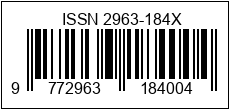PELUANG ENTERPRENEUR WANITA TANI DALAM DIVERSIFIKASI UBI KAYU SEBAGAI BAHAN BAKU PANGAN KONVENSIONAL
DOI:
https://doi.org/10.55681/swarna.v2i2.388Keywords:
Cassava Diversification, Conventional Food, EnterpreneurAbstract
The purpose of this community service activity is to carry out counseling and empowerment in the process of processing cassava into kaopi (flour) which has a soft texture, white color and a distinctive aroma (like fresh cassava) and a good packaging system and branding for business groups. women farmers in Bola Village, Batauga District, South Buton Regency, Southeast Sulawesi Province. The method of implementing community service is through the participatory action research (PAR) method which is carried out using participatory techniques such as Focus Group Discussions (FGD), surveys with the involvement of all members of business groups as interviewers, formal and non-formal discussions and discussions with stakeholders, so that people recognize the potential and existing problems and encourage participation in the activities carried out. The results of the implementation of community service activities show that the process of processing cassava into good and soft kaopi has been successful because the women farming business group has understood the stages in the kaopi processing process. So that the resulting kaopi has a soft texture, white color, does not smell and has been packaged properly in branded packaging.
Downloads
References
Bhinadi, A. 2017. Penanggulangan kemiskinan dan pemberdayaan masyarakat. https://books.google.com/books/about/Penanggulangan_Kemiskinan_dan_Pemberdaya.html?
Díaz Durán Pamela1, Adriana Armenta-Ramírez2, Anne Kristiina Kurjenoja2 and Melissa Schumacher2. 2020. Community Development through the Empowerment of Indigenous Women in Cuetzalan Del Progreso, Mexico. MDPI - Publisher of Open Access Journals. www.mdpi.com/journal.
Fahmid, I.M. 2004. Gagalnya Politik Pangan di Bawah Rezim Orde Baru. Sandi – Kota, Jakarta.
Jamaludin, A. N. 2013. Sosiologi Perdesaan. In Journal of Chemical Information and Modeling (Vol. 53, Issue 9).
Kementerian Pertanian. 2016. Deskripsi Varietas Unggul Ubi Kayu 1978 – 2016. Badan Litbang Pertanian. Jakarta
Muhandri, T. 2005. Strategi Penciptaan Wirausaha (Pengusaha) Kecil Menengah yang Tangguh, (Online), (http://tumoutou.net/702_05123/tjahja_m.html)
Prihatman, 2000. Ubi Kayu atau ketela. Kantor Deputi Menristek Pendayagunaan dan Pemasyarakatan Ilmu Pengatahuan dan Teknologi. Jakarta
Rahmat, A., & Mirnawati, M. (2020). Model Participation Action Research Dalam Pemberdayaan Masyarakat. Aksara: Jurnal Ilmu Pendidikan Nonformal, 6(1), 62–71. https://doi.org/10.37905/AKSARA.6.1.62-71.2020
Roja, A. 2009. Ubi Kayu: Varietas dan Teknologi Budidaya. Payakumbuh: Makalah Pelatihan (BPTP) Sumatera Barat.
Rukmana, R. 1997. Ubi Kayu, Budidaya dan Pascapanen. Yogyakarta: Kanisius. 82 Hal.
Safeí, A. A., Ono, A., & Nurhayati, E. (2020). Pengembangan Masyarakat Perspektif Islam dan Barat.
Sanawiri dan Ikbal. 2018. Kewirausahaan. Universitas Brawijaya Press
Downloads
Published
How to Cite
Issue
Section
License
Copyright (c) 2023 SWARNA: Jurnal Pengabdian Kepada Masyarakat

This work is licensed under a Creative Commons Attribution-ShareAlike 4.0 International License.












